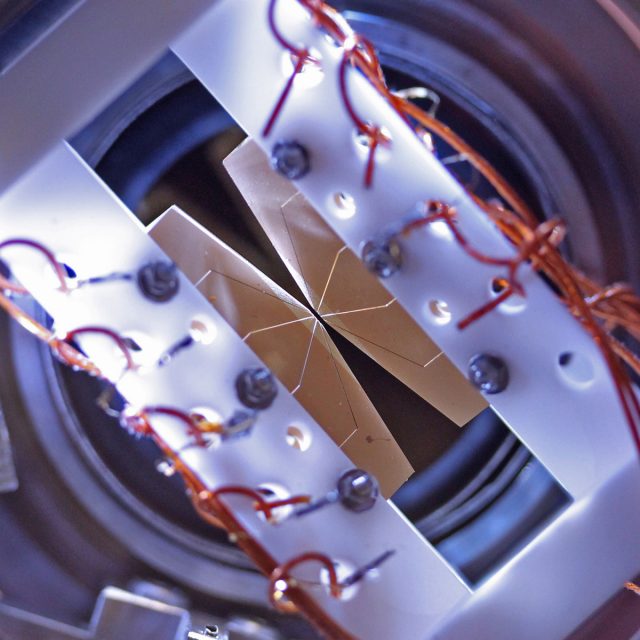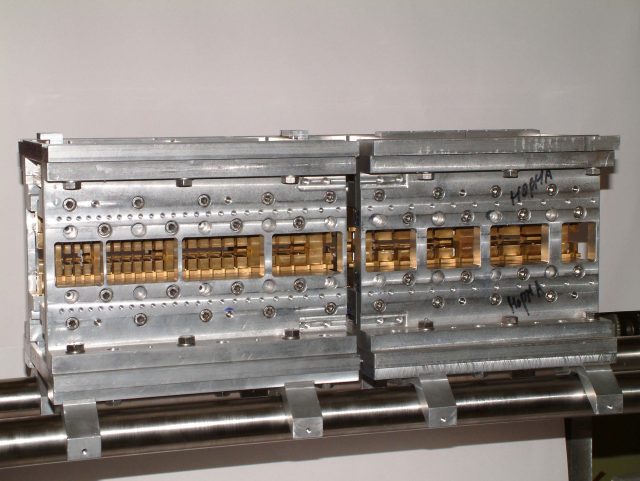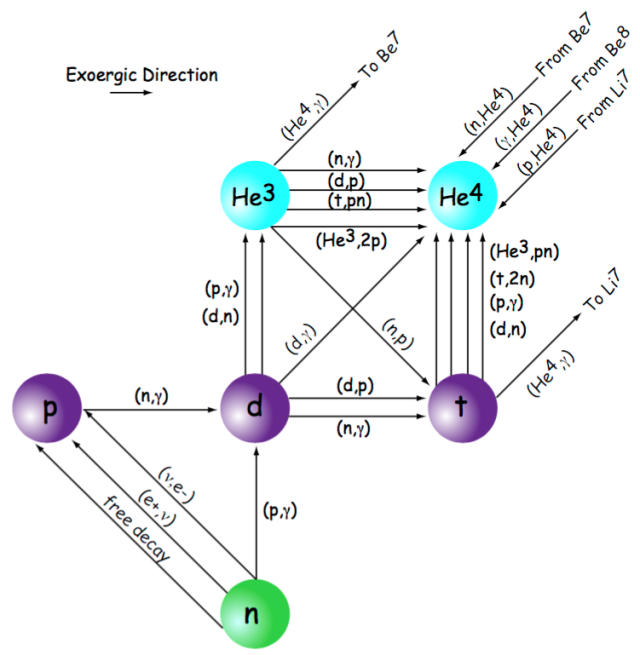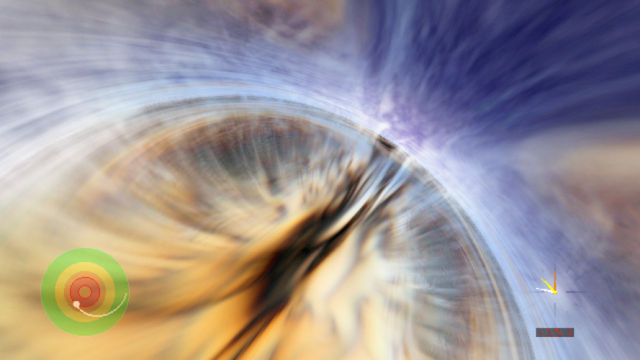
(credit: Joint Quantum Institute)
If you know me, you know that I tend to get obsessive about imaging. I usually stick to optical microscopes, but occasionally the folks who play with electrons and ions do something exciting, too. A recently published paper on ion microscopy has me pretty excited at the moment, which is about all the excuse I need to dig in.
Ion microscopy is similar to electron microscopy. In a typical electron microscope, you fire a beam of electrons at a sample and examine the angles at which the electrons scatter. These angles are directly related to the surface of the sample, so with a few optics (magnetic lenses, in the case of electrons), you get an image. Because electrons are heavy and energetic, they have a very short wavelength, so smaller features can be imaged.
After the development of the electron microscope, scientists realized that you can do similar things with ions—the nucleus of an atom with some or all of the electrons stripped off it. Hence, ion microscopy.








